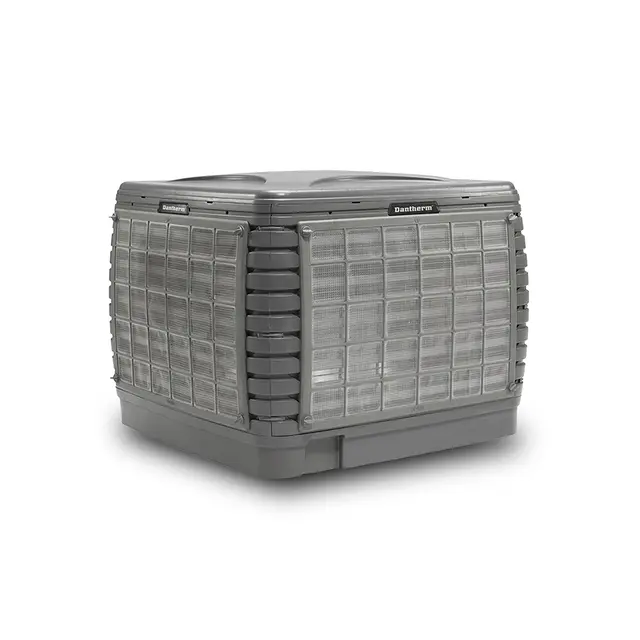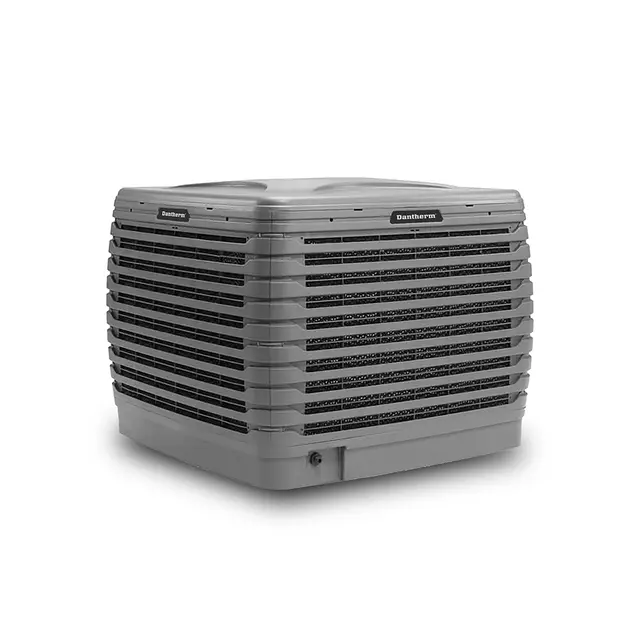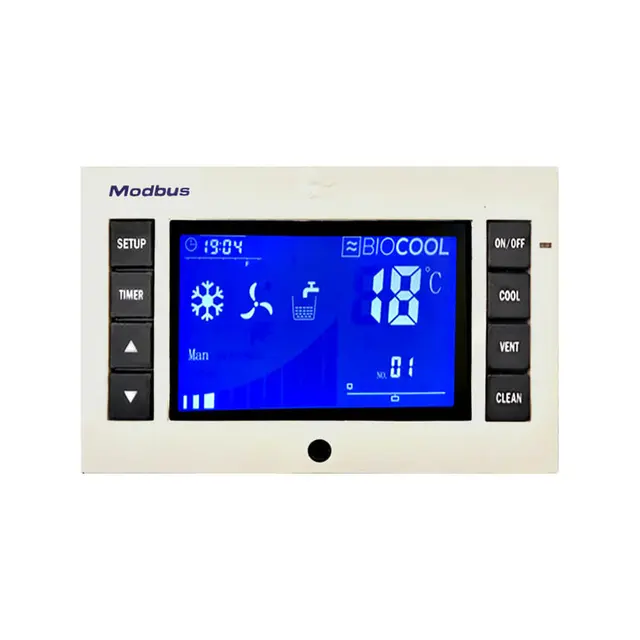How to maintain evaporative coolers before the hot season
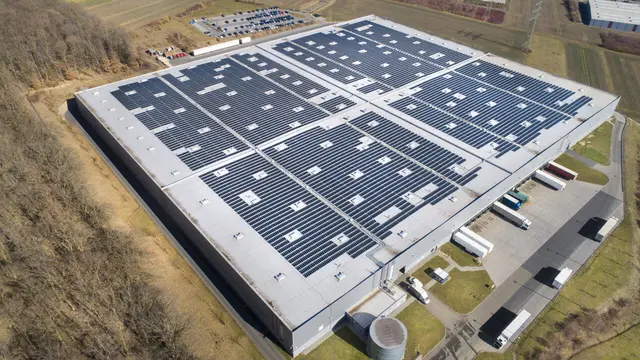
- Home
- Insights
- Cooling insights
- How to maintain evaporative coolers before the hot season
Using an evaporative cooler can help warehouses, manufacturing plants and more deliver effective, constant cooling with minimal energy consumption. But, in order to get the most out of these units, it is essential that they are well-maintained and managed.
There are numerous advantages that evaporative coolers offer over conventional air-conditioning systems in controlling the climate of warehouses, manufacturing plants and similar large spaces, from significant reductions in energy consumption and greater sustainability, to their effectiveness in environments that are not air-sealed.
However, another advantage that we are focusing on in this article is maintenance. Not only are evaporative cooling units far less complicated to maintain than the often-more complex, industrial HVAC systems, but the process is often significantly cheaper as there is no need to recharge the unit with costly refrigerant gases.
Nevertheless, without effective maintenance of your evaporative cooling solution, the incredible advantages that these systems offer can gradually fall away. Efficiency plummets. Cooling power declines. The costs of repairs and replacements climb substantially.
Here, we outline the four biggest maintenance issues that impact an evaporative cooler’s performance during the hot season and how to address these, and highlight what unique benefits Biocool’s evaporative coolers, including our transformative Smart City Cooler, offer to enhance your ability to identify problems with your unit and address these promptly.
The primary maintenance problems affecting evaporative coolers
In our experience, there are four common issues that affect evaporative coolers as a result of inadequate or incorrect maintenance:
Leaks inside the facilities
Clogged filter pads within the unit
Parts breaking due to frost damage during the winter months
Damage to mechanical components due to deposits in the water
1. Leaks inside the facilities
What causes this?
Any dirt that is gathered inside the equipment can obstruct the passage of water and cause it to fall through the ducts inside the facility. This can also occur if the filters become crystallised and do not therefore properly absorb water.
Why is it a problem?
This can be very problematic for those within the facilities as their activity can be affected by the presence of water leaking into their workspace. These leaks can affect machinery and products, generating substantial losses, and also negatively impact their general wellbeing and productivity.
How is it resolved?
By completely cleaning all the structural elements within the unit as part of routine maintenance, you can eliminate any blockages. It is also important to check that the filters are absorbing water correctly, and replacing these if necessary.
2. Clogged filter pads
What causes this?
Over time, as the filter pads within the evaporative cooler absorb water and interact with the hot air passing from the outdoors, they will gradually become clogged with loose debris.
Why is it a problem?
The more clogged these filter pads become, the harder the unit has to work to pass hot air through and convert it into cool air on the other side. This means it has to spend more energy to work effectively, making the unit more costly to run. Furthermore, the more clogged the filters are, the amount of cool air it can generate will be reduced, reducing its overall performance.
How is it resolved?
Our recommendation is to check and clean the filter pads prior to the start of the hot season to remove the debris. After every clean, the efficiency of the filters will reduce. The filters must be changed approximately after 3 years if they are used for 8 hours a day during the summer months. If they are used for even longer than this, the filters should be replaced even sooner.
3. Frost damage
What causes this?
During the colder winter months (when your evaporative cooler is likely not in use), it is possible that any water kept within the unit may freeze around particular components.
Why is it a problem?
If not checked at the beginning of the hot season, this frost may have resulted in noticeable damage to the inner workings of your evaporative cooler. By not addressing this damage, it may cause the units to malfunction when they are being used more regularly, leading to reduced performance and costly repairs.
How is it resolved?
At the beginning of the hot season, examine the components of the evaporative cooler for any signs of frost-related damage, and address these appropriately. To minimise the risk of frost damage occurring during the winter, we recommend:
Draining the water from the unit and completely cleaning it
Ensure there are no remnants of water remaining
Cover over the unit in order to protect it from the elements
4. Deposits in water
What causes this?
Similarly to the previous issue, over time the outdoor conditions (rain, snow, pollution, etc.) may result in mineral deposits accumulating inside the evaporative cooler.
Why is it a problem?
Like the frost damage, these deposits can gradually damage and corrode the components within the unit, reducing its performance, operational life-cycle and necessitating costly future repairs (or perhaps require the whole unit to be replaced altogether).
How is it resolved?
As before, draining the water at the end of the hot season and replacing it with fresh, clean water at the beginning of the next one will reduce the risk of deposits becoming a long-term issue. In addition, ensuring the unit is thoroughly cleaned and is covered over during the winter months will again restrict the amount of deposits that enter the unit.
If you would like a more comprehensive insight into the continued maintenance of evaporative coolers, we encourage you to download our complete maintenance guide. Within it you will find all the information you need to combat these and other issues that may impact the performance and long-term viability of your units.
How can you determine if there is a problem with your evaporative cooler?
It can be very difficult for those within a building to recognise that their fixed evaporative cooling solution is not performing optimally. Unless it is not working at all, it can be hard to notice if the cooling is not as powerful or is being delivered as efficiently as possible. In this time, you could be losing significant sums in energy consumption costs, or your unit could soon suffer a terminal failure.
Traditionally, this would mean that an engineer would have to frequently climb onto the roof of the building to examine the evaporative cooler to ensure there are no issues. Not only does this increase maintenance costs and takes up your engineers’ time, but this can be unnecessarily hazardous to their safety.
Introducing the Smart City Cooler
With this in mind, Biocool’s range of fixed evaporative coolers benefit from our sophisticated Smart City Cooler control. This intelligent device gives you data on the performance, efficiency and health of up to 10 separate evaporative coolers in real-time.
If there are any mechanical or functional faults with a unit, or it is not delivering air at the right temperature or humidity level, this is immediately highlighted to you. Through the Smart City Cooler, you know exactly where the origin and location of the fault is, and can quickly send an engineer to rectify the problem.
As a result, the Smart City Cooler helps you significantly reduce maintenance costs surrounding your evaporative cooling units, and ensures the long-term efficiency of these, so they are always working at optimal performance.
On top of the benefits that Biocool’s evaporative coolers incorporate, the advanced Smart City Cooler adds the advantage of real-time monitoring of their operation and performance. This enables you to:
Save time and resources by only performing maintenance when absolutely necessary
Address faults efficiently, ensuring that any loss of performance, increased energy consumption or similar issue is fixed before it can result in serious costs
Remain reassured that your evaporative coolers are working as they should throughout their lifespan
For more information on the Smart City Cooler, check out the video below:
How often should maintenance be performed on your evaporative cooler?
We recommend that engineers should perform two checks on their evaporative coolers annually - once at the beginning of the ‘hot season’, which will typically be around March or April, and once at the end of the season (October/November).
This bookended approach to maintaining your evaporative coolers ensures they are in the best possible condition from the outset, and that they are protected from major issues developing during the winter months.
What are the consequences of inadequate maintenance of your evaporative cooler?
As highlighted earlier, the failure to perform necessary maintenance on your evaporative cooler can lead to several unwanted consequences:
Leaks inside your facilities
Loss of performance of your cooling system, creating more uncomfortable environments within your buildings
Greater energy usage and costs due to the unit needing to work harder to overcome any obstacles – poor maintenance can reduce energy efficiency by up to 48%
Higher likelihood of the units breaking down, leading to expensive repairs that can be avoided with preventative maintenance
Significant reductions in the useful operational time of your units
How Biocool evaporative coolers make maintenance as seamless as possible
The Smart City Cooler is just one way that Biocool evaporative coolers make maintenance a straightforward process for engineers. We go a step further than others in our industry to develop solutions that are simple to look after long-term:
Antimicrobial ozone technology reduces the quantity of microbes in the water during the first hour of operation, removing them completely after three to four hours
A dedicated ‘winter mode’ to facilitate clean conservation when your coolers are not in use
‘Maintenance mode’ that simulates the operation of the equipment during the maintenance without inconvenience for the customer
Prefilters that protects the equipment from high levels of air pollution and waste
An individual disconnection system for each unit, allowing you to perform maintenance on one without needing to shut down any others in use
An optional fan protection grid that allows for safe handling during maintenance work
In addition, we are able to provide a wide range of spare parts that are compatible with other brands of evaporative coolers. This means that, even if you are not employing our units, you can still employ our robust components to support your existing systems.
For more information on the Biocool range, as well as advice and guidance on effective maintenance of your units, get in touch with our team using the form below.
Related products
Featured insights

Why clean air flow is good for business
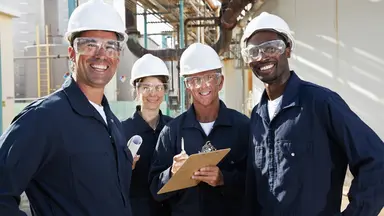
Employing evaporative coolers to protect the health and wellbeing of workers
Need help with choosing the right solution? Our team of over 100 climate control experts can assist.
You can also reach out or join the discussion on our Social Media. Check out our LinkedIn page.
